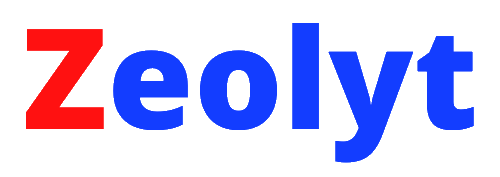Winning in redefined workspaces
The ability to work remotely has proven to be a big boon during COVID-19 crisis. The opportunity is now to transform a simple keep-the-lights-on approach to a highly differentiated strategy.
Hearing these bytes?
Every stakeholder is grappling with newer challenges in the redefined workspaces. Organizations that capture these feedback and address those holistically and systemically will build a winning advantage.The ones that don’t, will face diminishing outcomes.
SALES
How do I replicate the impact and experience of customer visit in virtual world
LEADER
How do I ensure my team’s productivity when they all are working from home; how do I preserve work-life balance
EMPLOYEE
Am I valued; Is my contribution visible; Am missing water-cooler chats; How will my performance be assessed
HUMAN RESOURCE
How do I propagate, preserve and reflect organization values, and culture; How do I drive employee engagement
CLIENT
Is my IP and data safe; Am I getting the right productivity
MARKETING
What new avenues I can leverage for branding; how do I attract talent
INFORMATION TECHNOLOGY
What infrastructure shall I create for a seamless and a secure work environment
FINANCE
How do I do office space planning; How will my budgeting change
The EPIC Framework
Zeolyt's EPIC framework captures and addresses these challenges across the four critical dimensions: Engaging Experience, Productivity, Integrity and Culture.
Engagement
Creating great experience and maintaining engagement with employees, customers, suppliers and partners with limited physical world interactions
Productivity
Impact of anxiety, perceived lack of control, other psychological concerns, infrastructure issues and difficulties in collaboration on productivity and morale
Challenges of Remote working
Culture
Propagation, retention and reinforcement of organization culture and building an environment of pride in values is becoming a more complex task
Integrity
A newly formed fraud triangle is leading to issues around work ethics, compliance, privacy and data security
The EPIC framework holistically analyzes each constituent that impacts the four critical dimensions, and drives a systemic change to build a highly resilient and rewarding operating structure.

COVID-19 has presented an opportunity to drive disruptive changes at unprecedented speeds, and adopt innovative practices to make businesses more resilient to crisis.
How we operate
Engagement Model
DISCOVER
Workshop with representatives from different functions and across levels to understand current challenges, explore expectations and discover differentiating avenues. Understand core values and culture of the organization and define the scope of the engagement
ASSESS
Assess the policies, processes, systems, infrastructure, organization structure and incentives. Identify the gaps and training needs and present a comprehensive plan to achieve desired-state and budgetary requirements. Prioritize activities to align with the budget and expected timelines
EXECUTE
Identify the functional stakeholders and prepare stream-level plan. Implement a governance model to track and drive Program success. Partner with stream owners to execute on the plan. Ensure desired outcomes are achieved within budget and set timelines
COVID-19 (coronavirus) is impacting businesses and the economy with significant long term implications. At Zeolyt, we are working closely with businesses to help them restart, operationalize, stabilize and get work force to return to work.
Does your Organization have a Pandemic Response Playbook?
Our Pandemic Response Playbook is designed to make these changes and practices more pervasive, effective and enduring while maintaining the core ethos of the organization
COVID-19 RESPONSE PLAYBOOK
Our COVID-19 Response Playbook is designed to make these changes and practices more pervasive, effective and enduring while maintaining the core ethos of the organization
Does your Crisis Management and Response to Pandemic include..
A formal cross-functional response team that is empowered to take decisions and has the right sponsorship from the top leadership
A right combination of leaders and SMEs who are responsible for a making a comprehensive crisis plan
A razor-sharp focus on processes and controls around stakeholder management, content development and cadence
An operations center that develops and socializes communications and key messages across the business and stakeholders
If you are not thinking ‘how well-positioned am I to weather a shock like Covid-19?’, then you are not preparing for the future

ASK YOUR LEADERSHIP...
Is your company considering strategic ways to differentiate as a result of your response to COVID-19?
Are you making use of the right information (e.g., public health information, business impact data, workforce disruption indicators, changing regulations) for your organization to respond effectively to COVID-19?
Are you communicating effectively with internal and external stakeholders regarding the impact of COVID-19 on your business?
Do you have processes and systems to track the location of your workforce, including remote workers and business travelers?
How are you deciding which critical roles and functions can be performed remotely?
Have you established protocols on ways of working remotely, and for managing remote teams?
Do you have defined business continuity plans that cover remote-working, health, and safety policies for your workforce?
Do you have the required IT infrastructure, internal controls and cyber security controls to support secure remote working?
Do you know if and where you’ll need to increase or decrease headcount to meet changing business and remote working needs resulting from COVID-19?
Have you assessed the non-workforce related operational impacts of COVID-19 on key business functions?
Have you evaluated strategies for alternative sourcing for raw materials and/or manufacturing, including the impact of transport and/or tariffs?
Have you assessed your ability to meet your contractual obligations to your customers and vendors?
Have you considered the nature and extent of communications necessary to inform stakeholders about the potential impacts of COVID-19 on your earnings and outlook in a transparent and timely manner?
How are you addressing the impact of COVID-19 on the financial reporting areas?
Few Recommendations that you can follow...
This will get you started. For more, we are here to help...
WORKFORCE
- Broaden the reach of your business contingency planning by including more detail for specific scenarios (e.g., how an employee working remotely could access company health resources if they fall ill while not on site)
- Identify changes in headcount (employees or contingent workers) required to support additional business, security, or remote working needs
- Define, test and monitor IT infrastructure capacity requirements to deliver on remote working needs
- Analyze and develop plans to respond to workforce impacts of government policy and regulation
FINANCE & LIQUIDITY
- Potentially increase frequency of cash monitoring, evaluate customers for their ability to meet ongoing credit terms, and monitor debt requirements and needs
- Have contingency plans and communication enacted for employees and outsourced providers in anticipation of remote workforce requirements
- For each potentially impacted area, assess the accounting and reporting implications, and ensure conclusions are subject to the appropriate level of review
- Increase the frequency of disclosure committee meetings due to increased level of risk and uncertainty
- Create a formal communication strategy for qualitative and quantitative events that may trigger the need for updated communications including when and how such communications should be made
- Leverage technology to automate certain finance and tax tasks to allow resources to turn their attention to more critical activities as part of your COVID-19 response
- Start to consider your go-forward finance and tax department, including headcount, technology, processes, and overall budget needed to complete required tasks.
OPERATIONS & SUPPLY CHAIN
- Use supply chain scenarios/simulations for potential disruptions to identify alternatives and quantify impact
- Conduct periodic reviews of your business continuity plans as new information becomes available. Consider whether your plans could handle additional disruptions at the same time as COVID-19
- Quantify impact of switching sources, including product cost, logistics, tariff implications, or other costs
- Develop and deploy supplier and customer allocation plans for supply shortages and incentives for excess supply in line with contract terms
STRATEGY & BRAND
- Expand your business strategy assessment to evaluate threats to each major line of business
- Organize a team to capture customer insights related to COVID-19 implications so you can analyze key trends
- Update your business strategy based on ongoing learnings from this crisis (e.g., expected demand/demand volatility, and changing customer expectations, employee requirements and supply chain strategies.)
TAX
- Ensure tax risk is continually managed throughout the crisis to maintain tax governance and manage current and future tax controversy/change in regulations
- Ensure tax has a substantive voice as a part of the core COVID-19 response team
- Ensure tax is connected to M&A / Deals personnel on any transactions/opportunities arising from the COVID-19 economic impact and consider the operational impact on tax function and needed reporting



